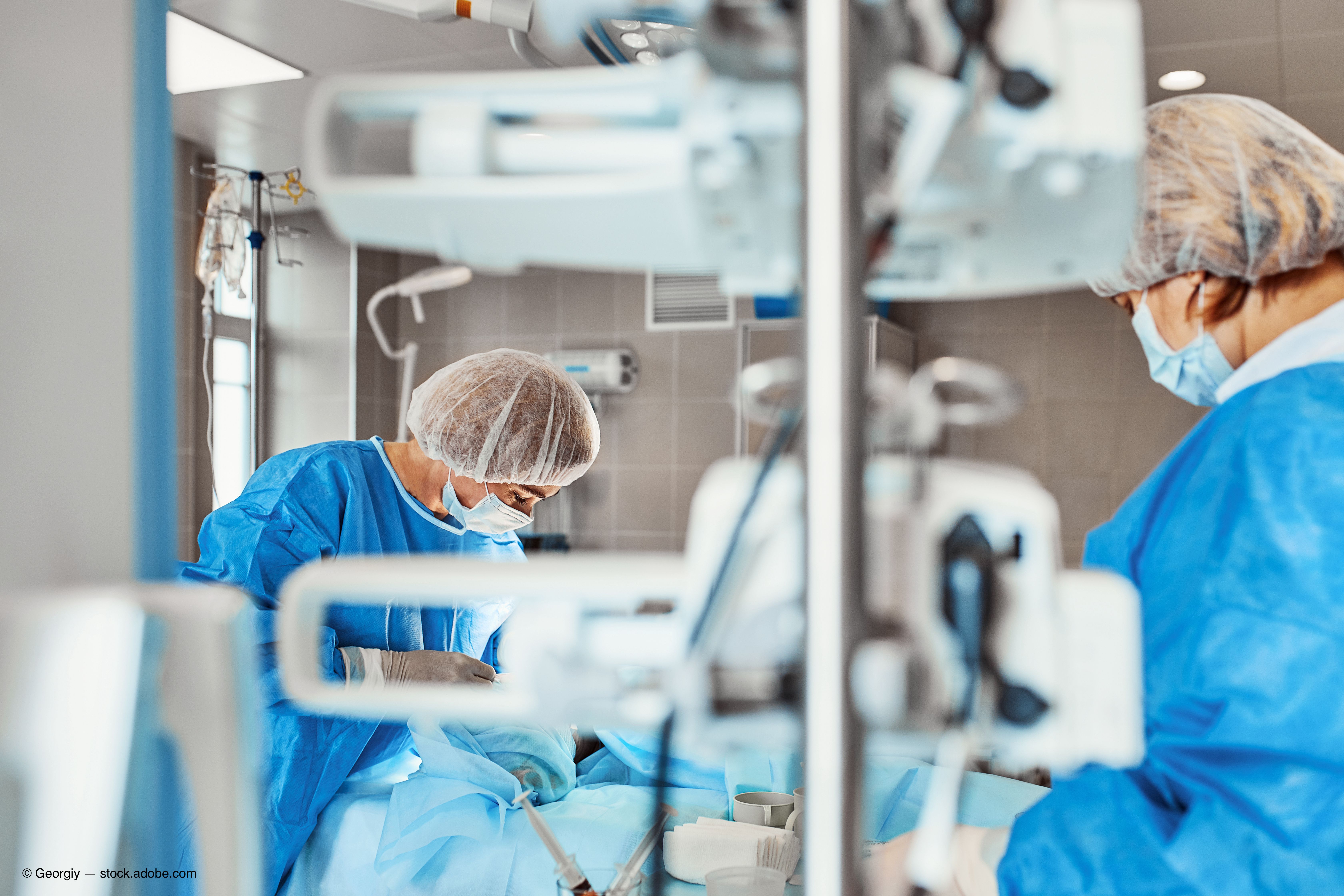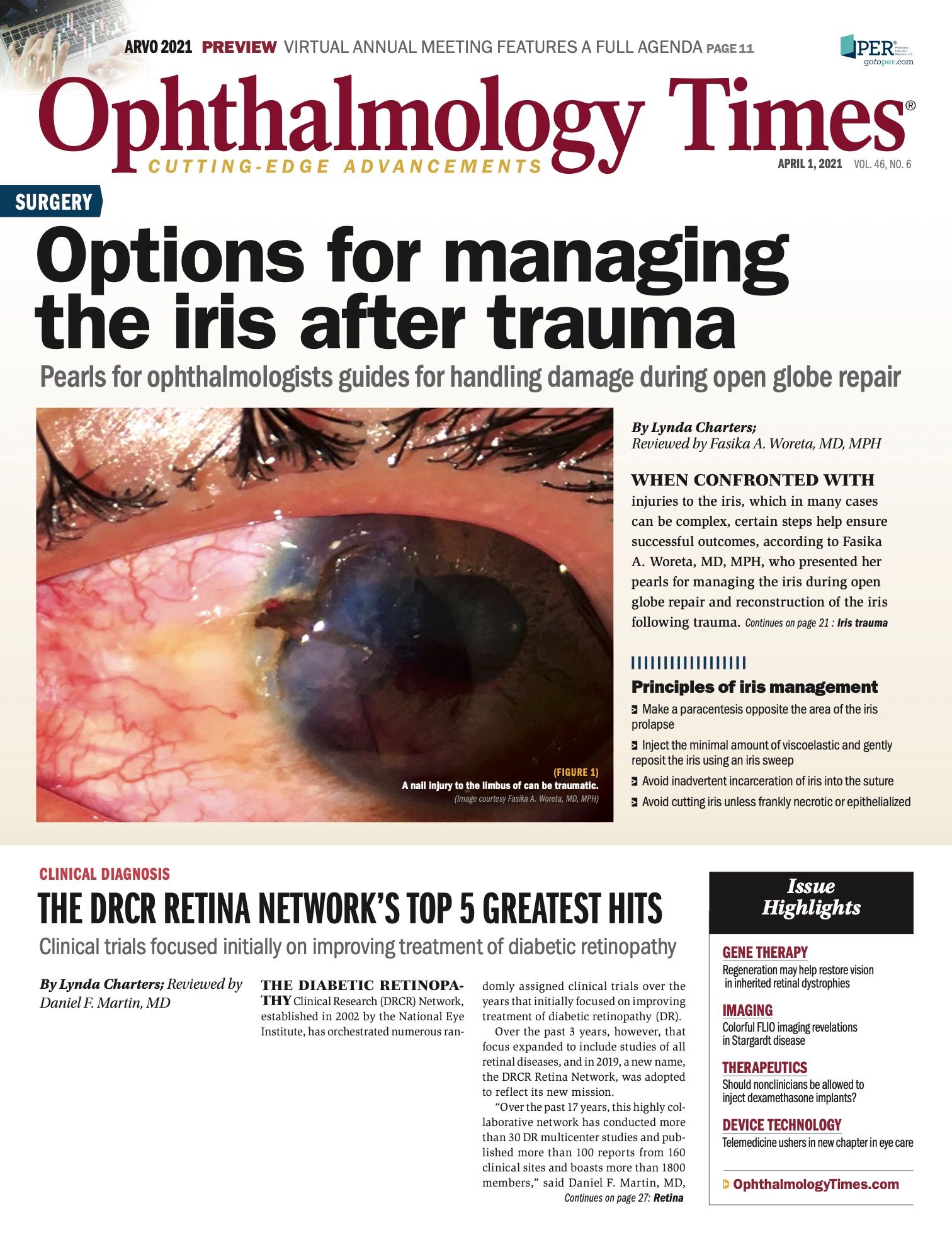Publication
Article
Digital Edition
Navigating the COVID-19 pandemic with ophthalmic patients in the hospital setting
Author(s):
New operating procedures ensure eye clinics can operate safely amid virus.

Special to Ophthalmology Times®
Although SARS-CoV-2 has been detected in tears, it is important to note that there is currently no proof that it affects the ocular surface.
However, clinics and ophthalmic practices have implemented procedures to ensure they can remain open and operate safely during the COVID-19 pandemic, and it is more important than ever for surgeons to protect themselves and their patients.
Ophthalmologists and patients need to follow local rules and regulations wherever their practices or hospitals are located.
Related: Adjusting ophthalmology practice to a pandemic
Unfortunately, policies can differ between countries and sometimes between states in the same country.
During the pandemic, a key challenge has been finding ways in which ophthalmologists can implement safe practices.
The pandemic has placed an emotional strain on our patients. They are extremely afraid of contracting COVID-19, which has kept many from entering hospitals where there are potentially other sick individuals and where the virus is concentrated.
In ophthalmology, less than 5% of our cases are urgent, wherein a patient has endured trauma to the eye.
Most of our patients need to be seen on a regular basis, so this presents a dilemma:
Is it better to preserve their general eye health, increasing the chances of coming into contact with COVID-19, or to defer checkups and reduce the possibility of exposure?
Related: Managing neovascular retinal disease in COVID-19 era requires careful approach
Unfortunately, many patients have chosen to postpone their visits. Some have been doing so for months and even up to a year now, depending on when the COVID-19 outbreak occurred in their places of residence.
Additionally, our staff—not only physicians but also technicians, nurses, support staff, and administrators—are at high risk of being exposed to the virus because of the number of individuals they come into contact with daily.
Although staff may not express their worry outright, they know they are in a difficult position because their chosen profession does not allow them the privilege of working safely from home.
The approach to patients, however, is different. Their greatest need is to receive information in advance and to maneuver quickly and securely through the diagnostic pathways.
Distancing in the operating room
When the pandemic started, the first thing we did as a practice was to make special shields to prevent very close contact with patients during an examination.
Related: Patient perception of COVID-19: Too risky for seamless eye care
Although we and the patients wear protective gear, the patients are not fully covered, especially if they are claustrophobic, and we need to adjust.
In the operating room, patients lie on their backs, and we use a microscope that hovers over them, meaning we are in line with their breath at all times.
Equally, when we are over the operating field, what comes out of our airways goes down to the patients’ exposed eyes. It is technically impossible to wear a shield when operating a traditional microscope during surgery.
To combat this concern, we use a digital microscope, which offers greater opportunities for protecting patients and surgeons from infection during operations.
The 3-dimensional heads-up microscope allows more distance from the patient. Moreover, because oculars are not used for 3-D surgery, the protection shield above the 3-D glasses is very easy to adjust.
The microscope allows the nurse to be on the other side of the room and still view the procedure in real time using 3-D glasses, which provides additional safety and allows social distancing. Although the surgeon, nurse, and assistant need to be in the operating room, they can distance evenly, maintaining safer separation.
Related: Implementing COVID-19 safety protocols, guidelines in practice
Treating patients with COVID-19
It seems that it would be easy for a surgeon to choose not to operate on patients who test positive for COVID-19.
However, in Bulgaria at least, whether patients should be requested to take a COVID-19 test has been controversial for ethical and legal reasons, and hospitals have varying policies in this country.
Although my hospital does not ask patients to be tested for COVID-19 prior to surgery, we do screen them for fever and flu symptoms as well as taking their temperature. If a patient is displaying symptoms, we ask them to see their general practitioner, who decides whether a COVID-19 test is appropriate.
I experienced the delicacy of treating patients with suspected COVID-19 in a case that presented to me at the beginning of the pandemic. In Bulgaria, we initially had a very small number of cases. As most people experienced, we were not allowed to leave the city or even go outside for walks.
Related: Ophthalmology residents retrained as palliative care extenders
During this time, I received a call from my associate at the hospital. There was a 12-year-old girl traveling from Pleven, the hottest region for COVID-19 in Bulgaria, with a perforated eye.
The reason for the perforation was unknown and the child was also experiencing fever and cough. At that time, I was most worried that the child was coughing, because in cases of perforation the tissues might prolapse.
The anesthesiologist was not able to give the child general anesthesia because of her temperature and other factors. I agreed to see the child, and when I arrived at the hospital almost everyone was staying about 9 feet away from the family.
It turned out that the child was a contact lens wearer; because of the lockdown, she had been unable to buy contacts.
As a result, she was wearing old lenses that were 2 weeks overdue for changing. The child had anisometropia with plano refraction on one eye and −7.0 D on the other eye.
From the documentation, I discovered that she had developed bacterial keratitis very quickly and her eye was almost perforated.
Related: Controlling glaucoma uncertainty as COVID-19 limitations continue
In normal times she would undergo lots of tests but instead of moving her around the hospital for evaluations, I decided to examine her in the operating room and be prepared to take material for microbiological evaluation.
I explained to the patient that she needed to be very cooperative because I could not give her general anesthesia due to her coughing. Fortunately, she calmly agreed, especially when I explained that it would be painless.
Using the digital microscope and optical coherence tomography (OCT) imaging, I managed to evaluate her entire cornea while protecting myself from what I thought was a patient potentially infected with COVID-19.
I found that she, in fact, did not have any perforation. Instead, she had a zone of thinning surrounded by cornea with massive infiltration.
I performed a noninvasive procedure that is painless to the patient, called PAX crosslinking, which uses UV light to kill microorganisms and makes the cornea stronger. I combined the procedure with transplantation of amniotic membrane as a cover.
Related: A potential new symptom of COVID-19: Eye nodules
The 3-D technology and the OCT control, often called the third hand, allowed me to be very precise as I performed these steps. As a result, the child now sees 20/50 with correction, which is a big accomplishment considering that she was about to lose her eyesight.
To complicate the case further, the child and her parents tested negative for COVID-19. In fact, she had ordinary influenza. However, if I had decided to wait 48 hours for COVID-19 test results before operating, she would have lost her vision, which would have been devastating for a girl of such a young age.
In the age of COVID-19 we must be flexible and consider the circumstances of each case individually.
Continuing education
Even though we are in a pandemic, we should not forget the importance of education in medicine.
Unfortunately, the first thing that happens during a lockdown in a hospital is that, although the permanent staff stays, all people on educational duties are sent home for distance learning.
Related: Glaucoma care after COVID-19: The Pan-American view
In the long term, we need to consider that if we postpone education for 6 months and then postpone it for another 6 months, a year will go by very quickly, creating gaps in the system for qualified eye specialists.
Moreover, 3-D microscopy offers a great educational tool because students can stay 10 meters away from patients, wear 3-D glasses and be able to look at a big screen and view the surgery as if they are participating. They see so much more detail than if they were looking over the patient with a conventional microscope.
Conclusion
We do not really know how to react to the stress of a global pandemic, and we have surely made—and will make—a lot of mistakes that will be revealed in time.
However, we need to focus first on being good doctors, good managers, and good teachers. Regardless of the situation, we should continue to treat and work in teams.
Related: Study: Sore eyes a common symptom in COVID-19 patients
Safety is the priority, of course, and new technology is facilitating novel and sometimes very complicated procedures for disinfection and social distancing. Integration and shared information when using equipment is of great help when reducing patient movement is necessary in the clinical setting.
The circumstances are not easy, but we will survive this and learn more. I hope we will end up with better solutions for the future that are beneficial for ophthalmic care not only during a pandemic but also when we return to normal life.
---
About the author
Christina N. Grupcheva, MD, PhD
e:cgrupcheva@gmail.com
Grupcheva is head of the Department of Ophthalmology and Visual Sciences and vice rector at the Medical University of Varna. She represents Bulgaria and is also currently president elect of the European Board of Ophthalmology. She has no financial disclosures related to the content of this article to report.

Newsletter
Don’t miss out—get Ophthalmology Times updates on the latest clinical advancements and expert interviews, straight to your inbox.
2 Commerce Drive
Cranbury, NJ 08512
All rights reserved.




